In a world where culinary passions meet technological advancements, the pizza maker has become a staple in kitchens across the globe. As the market for these convenient and delightful appliances continues to expand, one particular factor stands out as a beacon of quality and trust: RoHS compliance. This article delves into the significance of RoHS compliance for pizza makers and explores the dynamic landscape of the global kitchen appliance market, highlighting key players, success stories, and the future outlook for this burgeoning industry.
Introduction to the European and American Kitchen Appliance Market
The European and American kitchen appliance markets are dynamic landscapes, where innovation meets everyday convenience. With a myriad of products ranging from traditional ovens to cutting-edge smart kitchen gadgets, these markets have become hotbeds for technological advancements and consumer preferences.
In Europe, the kitchen appliance market is characterized by a strong emphasis on energy efficiency and eco-friendly designs. Consumers here are increasingly looking for appliances that not only enhance their cooking experience but also align with their sustainable living values. From sleek induction cooktops to compact dishwashers, European homes are adorned with appliances that promise both performance and environmental consciousness.
On the other side of the Atlantic, the American market is a blend of innovation and consumer culture. Americans are known for their love of convenience and high-tech gadgets, and this extends to kitchen appliances as well. The market is vast, with a preference for large, powerful appliances that can handle a variety of cooking tasks. From professional-grade ranges to countertop microwaves, the American kitchen is a testament to the country’s appetite for the latest in kitchen technology.
One notable trend in both regions is the rise of smart kitchen appliances. These devices, equipped with internet connectivity and advanced software, offer users a level of control and customization that was once unimaginable. From remotely controlling your oven via a smartphone app to having your refrigerator suggest recipes based on its inventory, smart kitchen appliances are becoming a norm rather than an exception.
In Europe, the market for smart kitchen appliances is growing rapidly, driven by the region’s early adoption of technology and a general interest in improving home automation. Brands like Siemens, Bosch, and Miele have been at the forefront of this trend, offering a range of smart appliances that cater to the needs of eco-conscious and tech-savvy consumers.
Similarly, in the United States, the smart kitchen appliance sector is expanding, with companies like GE Appliances and Whirlpool leading the charge. The American market is particularly interested in appliances that offer convenience and efficiency, such as smart refrigerators that can track food expiration dates and suggest meal plans.
Another significant aspect of both European and American markets is the emphasis on quality and durability. Consumers in these regions are willing to invest in appliances that will last for years, rather than opting for cheaper, disposable alternatives. This preference for quality has led to a competitive landscape where brands must continually innovate to meet the high standards of their customers.
In Europe, the kitchen appliance market is also influenced by regional culinary traditions. For instance, countries like Italy and France have a rich culinary heritage that influences the types of appliances available. Italian homes might be more likely to find a high-quality pizza oven, while French kitchens might feature sophisticated espresso machines.
In the United States, the market is more diverse, reflecting the country’s melting pot of cultures. From Italian-American pizzerias to Japanese sushi bars, the variety of cooking styles and preferences in American kitchens requires a wide array of specialized appliances.
Despite the differences in market dynamics, both the European and American kitchen appliance markets share a common goal: to provide consumers with products that enhance their lives. Whether it’s through energy-efficient designs, smart technology, or the ability to create a wide range of culinary delights, these markets continue to evolve, offering a glimpse into the future of kitchen appliances.
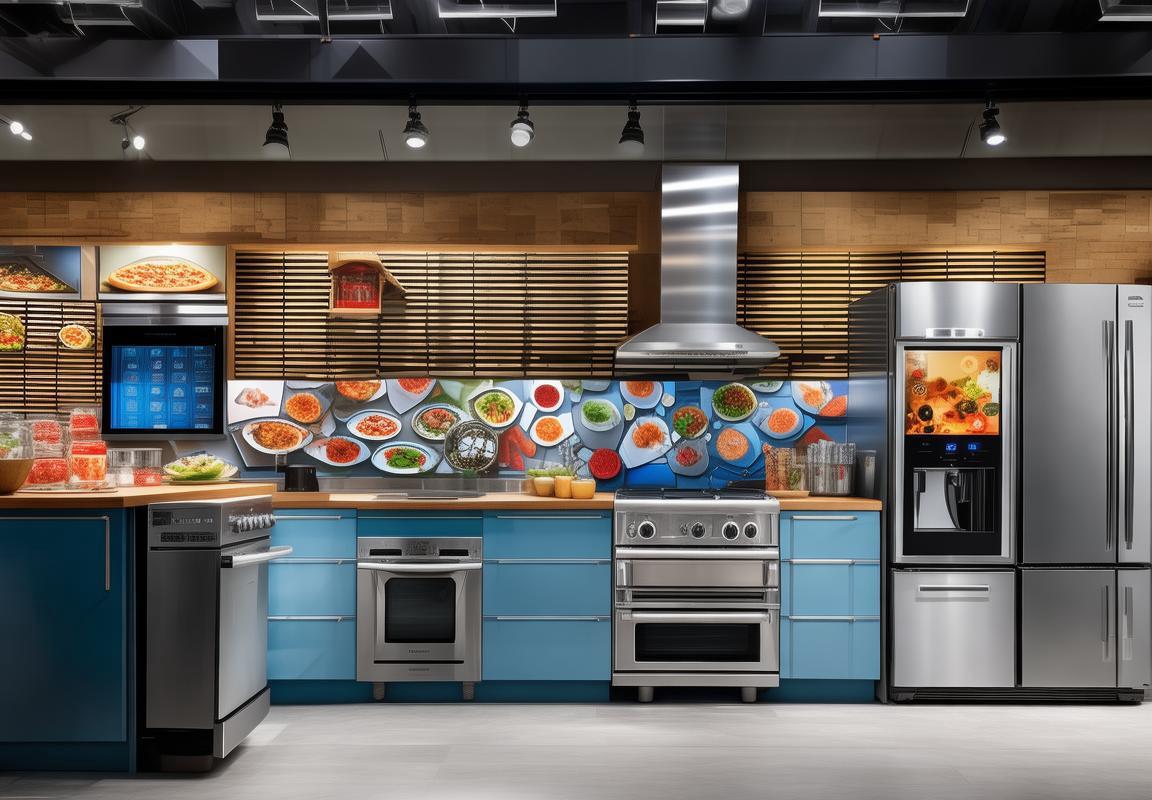
The Rising Demand for RoHS Compliant Pizza Makers
The European and American kitchen appliance markets have long been at the forefront of innovation and consumer trends. Within this dynamic landscape, the demand for RoHS compliant pizza makers has been on the rise, reflecting a shift towards eco-friendly and sustainable products. This surge in popularity can be attributed to several key factors that are reshaping the industry.
-
Environmental Awareness GrowsConsumers in Europe and the United States are increasingly conscious of the environmental impact of their purchases. The RoHS (Restriction of Hazardous Substances) directive, which restricts the use of certain hazardous materials in electrical and electronic equipment, has become a standard for consumers looking to make eco-conscious choices. Pizza makers that adhere to these regulations are seen as more responsible and are, therefore, gaining favor in the market.
-
Health and Safety ConcernsThe health and safety of users are paramount in the kitchen appliance sector. RoHS compliant pizza makers are free from lead, mercury, cadmium, hexavalent chromium, polybrominated biphenyls (PBBs), and polybrominated diphenyl ethers (PBDEs). This not only ensures that the appliances are safe to use but also reduces the risk of environmental contamination, which is a significant concern for both consumers and regulatory bodies.
-
Technological AdvancementsAdvancements in technology have led to the development of more efficient and user-friendly pizza makers. As these devices become more sophisticated, manufacturers are focusing on integrating RoHS compliance into their design and production processes. This has created a market where innovation and environmental responsibility go hand in hand, attracting tech-savvy consumers who value both aspects.
-
Retailer and Distributor PreferencesRetailers and distributors are also driving the demand for RoHS compliant pizza makers. As they seek to diversify their product offerings and cater to the growing number of eco-conscious consumers, they are increasingly sourcing appliances that meet specific environmental standards. This preference is not only about meeting customer expectations but also about maintaining a positive brand image.
-
Global Supply Chain IntegrationThe global supply chain has become more interconnected, and manufacturers are recognizing the importance of exporting products that are compliant with various international regulations. For pizza makers looking to enter the European and American markets, RoHS compliance is a necessity. This integration has led to a higher demand for RoHS compliant models, as they are easier to export and distribute across borders.
-
Government Initiatives and IncentivesGovernments in Europe and the United States have implemented various initiatives and incentives to promote the use of environmentally friendly products. These can include tax breaks, grants, and subsidies for businesses that produce and export RoHS compliant appliances. Such policies are creating a favorable environment for the growth of the RoHS compliant pizza maker market.
-
Consumer Loyalty and Repeat PurchasesOnce consumers have purchased a RoHS compliant pizza maker, they tend to develop a loyalty towards the brand. The assurance of a product that is not only high quality but also environmentally responsible can lead to repeat purchases and positive word-of-mouth recommendations. This loyalty is a powerful driver of demand in the market.
-
Market Expansion and DiversificationAs the demand for RoHS compliant pizza makers continues to grow, manufacturers are expanding their product lines and diversifying their offerings. This includes the development of smart pizza makers with connectivity features, which not only appeal to environmentally conscious consumers but also to those interested in the latest kitchen technology.
-
Competitive AdvantageFor manufacturers, offering RoHS compliant pizza makers can provide a competitive edge. As the market becomes more saturated with similar products, the ability to differentiate through compliance with international environmental standards can be a key selling point. This not only attracts new customers but also retains existing ones.
-
The Future of Eco-Friendly AppliancesThe rising demand for RoHS compliant pizza makers is a glimpse into the future of kitchen appliances. As consumers and governments continue to prioritize sustainability, we can expect to see a growing number of appliances that are not only RoHS compliant but also meet other environmental standards, such as energy efficiency and recyclability. This trend is set to reshape the entire industry, with eco-friendly appliances becoming the norm rather than the exception.
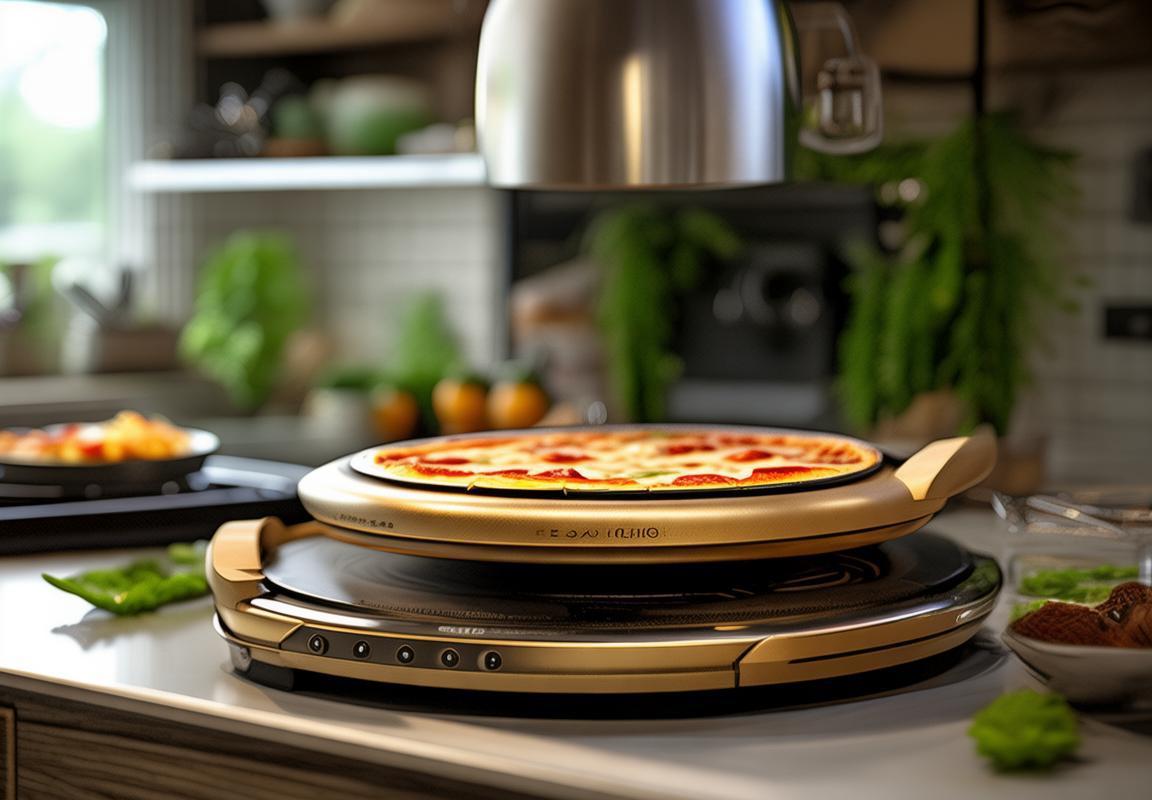
Understanding RoHS Compliance: What It Means for Pizza Makers
In the ever-evolving landscape of kitchen appliances, the demand for RoHS compliant pizza makers has surged, driven by stringent environmental regulations and consumer consciousness. Understanding what RoHS compliance entails is crucial for pizza makers looking to tap into international markets, especially in Europe and North America.
The Restriction of Hazardous Substances directive, commonly known as RoHS, is a European Union regulation that restricts the use of certain hazardous materials in electrical and electronic equipment. These substances include lead, mercury, cadmium, hexavalent chromium, polybrominated biphenyls (PBBs), and polybrominated diphenyl ethers (PBDEs). The purpose of RoHS is to reduce the environmental impact of electronic waste and to protect human health.
For pizza makers, RoHS compliance means ensuring that their products do not contain these restricted substances in concentrations exceeding the maximum allowable limits. This involves careful design, material selection, and manufacturing processes. Let’s delve into what this means for pizza makers at various stages of their product lifecycle.
Design and Development: From the outset, engineers and designers must consider RoHS compliance. This means choosing components and materials that are free from the restricted substances or have concentrations well below the legal thresholds. It also requires a thorough understanding of the manufacturing process to ensure that no unintended introduction of these substances occurs.
Material Selection: Pizza makers must scrutinize the materials they use for manufacturing their appliances. For instance, lead-free solders, tin-based solders, and alternative materials for plastic casings that do not contain PBDEs or PBBs must be chosen. Suppliers must provide documentation to confirm that the materials are RoHS compliant.
Manufacturing Processes: The manufacturing process itself plays a critical role in maintaining RoHS compliance. This includes controlling the temperature during soldering to prevent lead contamination, using alternative methods for heat dissipation that don’t involve banned substances, and implementing rigorous quality control checks to ensure that finished products meet the required standards.
Testing and Certification: Once the pizza maker has produced a RoHS compliant product, it must undergo testing to confirm its compliance. This testing is typically conducted by an independent third-party laboratory. If the product passes, it receives a RoHS certificate, which is essential for marketing and selling the product in the EU market.
Marketing and Sales: Having a RoHS certificate opens up new markets for pizza makers. In Europe, consumers and businesses are increasingly aware of environmental regulations and prefer products that are certified as RoHS compliant. This can be a significant selling point in a competitive market.
International Trade: For pizza makers looking to export to non-EU countries, understanding RoHS compliance is still important. Many countries have their own versions of RoHS, such as the China RoHS or the US’s Electronic Waste Export Ban. These regulations may require similar levels of compliance, and having a RoHS certificate can serve as a benchmark for meeting other international standards.
Customer Expectations: As consumers become more environmentally conscious, they expect the products they purchase to be safe and sustainable. A RoHS compliant pizza maker not only meets these expectations but also demonstrates a commitment to responsible manufacturing practices.
Innovation and Cost Considerations: While RoHS compliance can add complexity and potentially increase costs, it also drives innovation. Pizza makers must continually seek alternatives to banned substances and improve their manufacturing processes. This can lead to more efficient and cost-effective production methods in the long run.
In conclusion, RoHS compliance is not just a legal requirement; it’s a testament to a pizza maker’s commitment to environmental responsibility and product safety. By adhering to these regulations, pizza makers can expand their market reach, build trust with consumers, and contribute to a more sustainable future.
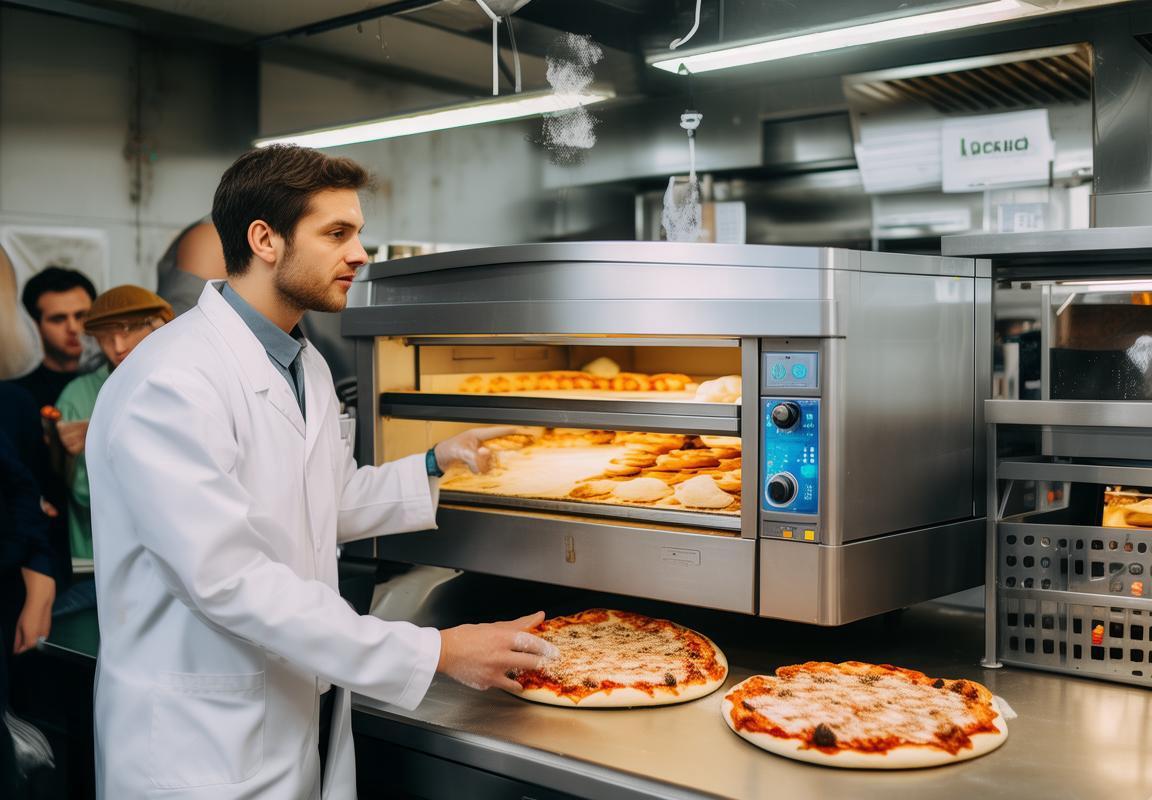
The Market Dynamics: Trends and Drivers in the Pizza Maker Industry
In the competitive landscape of the kitchen appliance market, pizza makers have carved out a niche that’s not just limited to passionate pizza enthusiasts but has expanded to include a broader consumer base. This growth has been fueled by several trends and drivers that are reshaping the industry.
The surge in home cooking and baking hobbies has been a significant driver, with many consumers seeking to replicate their favorite restaurant experiences at home. This has led to a demand for high-quality, easy-to-use pizza makers that can deliver professional results without the need for a professional kitchen. The convenience factor is a major draw, as these appliances often come with features like automatic temperature control and removable non-stick surfaces for easy cleaning.
Health and wellness trends have also played a pivotal role in the growth of the pizza maker industry. With an increasing awareness of the nutritional content in food, many consumers are looking for healthier alternatives to traditional deep-dish or frozen pizzas. Pizza makers that offer options for whole-grain dough, leaner toppings, and healthier cooking methods are gaining popularity. The ability to customize at home has become a powerful selling point for these appliances.
Smart technology integration is another trend that’s gaining traction. Pizza makers with built-in smart features, such as Wi-Fi connectivity for remote control and recipes, are appealing to tech-savvy consumers who want to combine their love for technology with their culinary passions. This integration also allows for the sharing of recipes and cooking tips, fostering a community of pizza lovers who are eager to experiment and share their creations.
E-commerce has revolutionized the way consumers purchase kitchen appliances, including pizza makers. The ease of online shopping, coupled with the convenience of home delivery, has made it simpler for consumers to discover and purchase new appliances. This shift has also allowed manufacturers to reach a wider audience, as geographical boundaries are no longer a limiting factor.
Sustainability is becoming a key concern for both manufacturers and consumers. Pizza makers that are designed with eco-friendly materials and energy-efficient features are gaining market share. Consumers are increasingly aware of their carbon footprint and are looking for products that align with their environmental values. This green trend has prompted pizza maker brands to invest in research and development to create more sustainable appliances.
The global pizza industry itself is a major driver for pizza maker sales. With the rise of international cuisine, the demand for authentic Italian-style pizzas has soared. Pizza makers that can deliver the authentic taste and texture of Neapolitan or New York-style pizzas are in high demand. This has spurred innovation within the pizza maker sector, as manufacturers strive to replicate these popular styles in home appliances.
Cultural shifts and demographic changes are also influencing the market. The rise of single-person households and busy lifestyles has led to a preference for quick and easy meals. Pizza makers that can produce a fresh pizza in minutes are perfectly positioned to cater to this market segment. Additionally, the growing number of young consumers who are digital natives and value innovation and connectivity are driving the demand for advanced pizza-making technology.
Lastly, the rise of foodie culture has created a market for specialty and gourmet pizza makers. Consumers are not just looking for the convenience of a quick meal but also for the ability to create unique and personalized pizzas. This has led to a demand for pizza makers with various features, such as built-in grills for charred toppings, multiple crust settings, and even options for gluten-free dough.
The pizza maker industry is dynamic and evolving, with a variety of trends and drivers pushing it forward. From the convenience of home cooking to the importance of health and sustainability, these factors are shaping the future of pizza makers and how they are perceived by consumers around the world.

Key Players in the RoHS Compliant Pizza Maker Export Sector
In the world of pizza makers, several companies have emerged as key players in the export sector, specializing in RoHS compliant products. These brands have not only mastered the art of crafting high-quality pizza ovens but have also navigated the complexities of global trade and environmental regulations. Here’s a closer look at some of the notable companies shaping the RoHS compliant pizza maker export market:
-
Pizza Chef Internationalpizza Chef International has been a household name in the pizza-making industry for decades. Their commitment to innovation and quality has allowed them to become a leading exporter of RoHS compliant pizza makers. With a diverse range of models catering to different kitchen sizes and needs, Pizza Chef International has established a strong presence in both Europe and the United States.
-
Ovention CorporationOvention Corporation stands out for its advanced technology and commitment to sustainability. Their pizza ovens are not only RoHS compliant but also designed with energy efficiency in mind. The company’s export division has successfully tapped into the global market, offering solutions for commercial kitchens worldwide.
-
Gazco AppliancesGazco Appliances, known for their gas-powered appliances, has expanded its portfolio to include RoHS compliant pizza makers. Their focus on safety and environmental responsibility has made them a trusted brand in the export sector. With a reputation for durability and performance, Gazco’s pizza makers are sought after by chefs and pizzerias around the globe.
-
Maverick CookshopMaverick Cookshop has carved out a niche in the market by offering a range of eco-friendly pizza makers that adhere to RoHS standards. Their commitment to sustainability is evident in their use of recycled materials and energy-efficient designs. Maverick Cookshop’s export business has grown significantly, as more restaurants and foodservice operators look to reduce their environmental footprint.
-
DeLonghiDeLonghi, a well-known name in small kitchen appliances, has ventured into the pizza maker market with RoHS compliant models. The company’s reputation for reliable and user-friendly products has helped them gain a strong following in the export sector. DeLonghi’s pizza makers are particularly popular in Asia and the Middle East, where the brand is well-recognized.
-
BrevilleBreville, an Australian brand known for its premium kitchen appliances, has made a name for itself in the RoHS compliant pizza maker export market. Their pizza makers are designed with both functionality and style in mind, appealing to consumers who value both quality and aesthetics. Breville’s export strategy has focused on expanding into European and North American markets.
-
Nordic WareNordic Ware, a company with a long history of manufacturing high-quality bakeware, has expanded its offerings to include RoHS compliant pizza makers. Their commitment to innovation has led to the development of unique models that combine traditional baking techniques with modern technology. Nordic Ware’s export sales have seen a steady increase, driven by their reputation for excellence.
-
Baker’s PrideBaker’s Pride has been a staple in the commercial baking industry for years, and their entry into the RoHS compliant pizza maker market has been well-received. The company’s focus on providing durable and reliable appliances has made them a go-to choice for commercial kitchens looking to export their products globally.
These key players in the RoHS compliant pizza maker export sector have demonstrated a commitment to quality, innovation, and environmental responsibility. Their ability to adapt to changing market demands and comply with international regulations has positioned them as leaders in the industry. As the demand for high-quality, sustainable kitchen appliances continues to grow, these companies are poised to expand their reach and solidify their positions as exporters of choice.
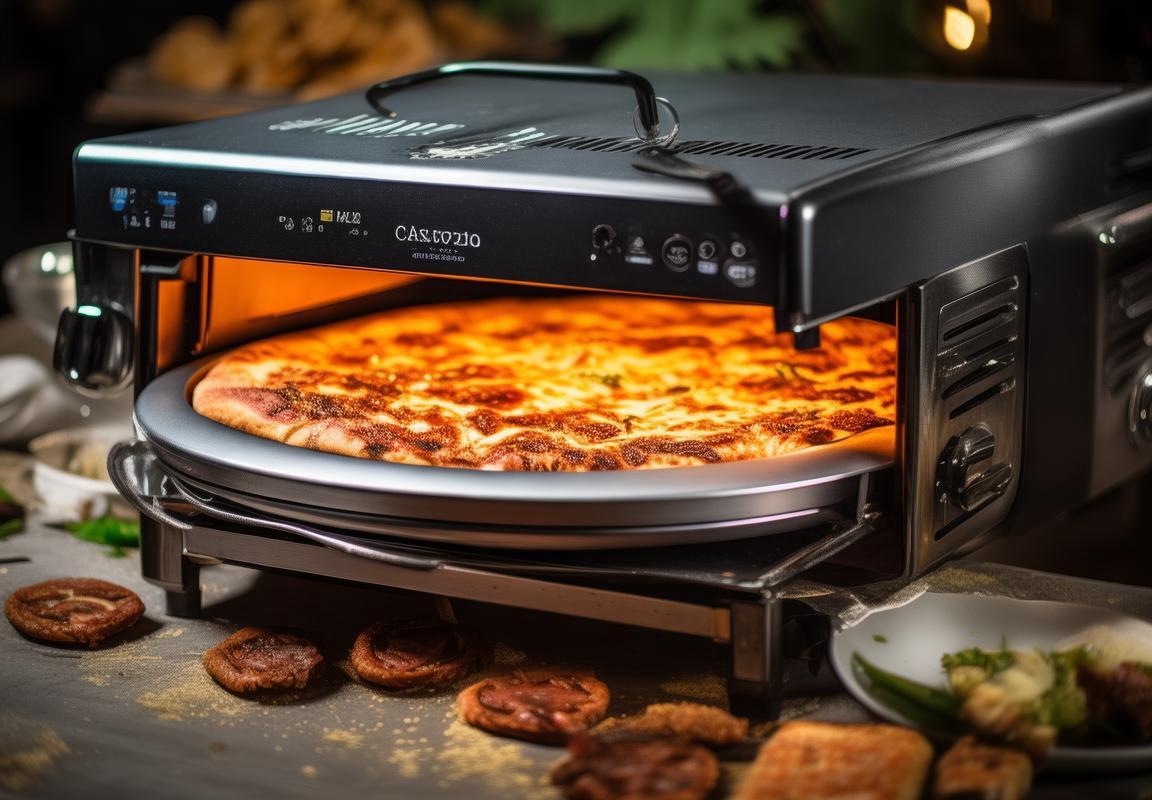
Case Study: Success Stories of RoHS Compliant Pizza Maker Exporters
In the world of pizza makers, there are several exporters who have carved out a niche for themselves by adhering to the strict RoHS (Restriction of Hazardous Substances) compliance standards. Their success stories are not just about producing quality products but also about navigating the complexities of international trade and sustainability. Here’s a look at a few of these exporters and their remarkable journeys.
One such exporter is Italian-based PizzArtisan, known for its handcrafted pizza ovens that are RoHS compliant. Their success story begins with a deep understanding of the market’s demand for eco-friendly and safe appliances. PizzArtisan invests heavily in research and development to ensure that their products meet not only the RoHS standards but also the highest culinary expectations.
The company’s commitment to sustainability is evident in their choice of materials and manufacturing processes. They use high-quality, non-toxic materials that are free from lead, mercury, cadmium, hexavalent chromium, polybrominated biphenyls, and polybrominated diphenyl ethers. This focus on quality has allowed PizzArtisan to secure contracts with top-tier hotels and restaurants worldwide.
Another standout exporter is the German company, PizzaPro, which has gained a reputation for its innovative pizza ovens that are both RoHS compliant and energy-efficient. Their success can be attributed to their strategic partnerships with local suppliers who share their commitment to environmental responsibility. PizzaPro has managed to create a product line that not only meets the RoHS directive but also offers customers a competitive edge in terms of energy savings.
One of the key factors contributing to PizzaPro’s success is their ability to adapt to the changing trends in the pizza industry. They have developed ovens that can handle a variety of cooking styles, from traditional wood-fired to modern conveyor ovens. This versatility has made them a favorite among pizza enthusiasts and professionals alike.
A third example is the South Korean firm, S-PizzaTech, which has made a name for itself by exporting RoHS compliant pizza makers to the United States and Europe. S-PizzaTech’s success is a testament to their ability to blend cutting-edge technology with traditional craftsmanship. Their ovens are designed with the latest features that make them easy to use and maintain, while also being safe for both the user and the environment.
The company’s focus on customer satisfaction is clear in their after-sales service, which includes training sessions for end-users to ensure they get the most out of their pizza makers. S-PizzaTech’s dedication to quality has earned them a loyal customer base, and their exports have seen a steady growth over the years.
In the case of a smaller, family-owned business like FireNest Pizza Ovens from the United States, success has come from a combination of passion and perseverance. The founders, who are pizza enthusiasts themselves, set out to create an oven that would be not only RoHS compliant but also a joy to use for home chefs and professional pizzaiolos. Their oven, made with a unique blend of materials that are safe and durable, has been a hit on the international market.
FireNest’s story is one of dedication to the craft and a deep understanding of the pizza-making process. Their ovens are designed to mimic the authentic Italian wood-fired experience, allowing users to achieve the perfect crust and flavor. The company’s commitment to quality and compliance has led to a strong export business, with their products being featured in gourmet markets and high-end home kitchens across the globe.
These success stories highlight the importance of RoHS compliance in the pizza maker industry. They show that by adhering to strict environmental and safety standards, exporters can not only meet the demands of the global market but also stand out as leaders in innovation and sustainability. The companies mentioned above have managed to balance technological advancements with a strong ethical stance, ensuring that their products are not just safe but also a pleasure to use. As the world continues to move towards more eco-conscious consumer choices, these exporters are well-positioned to capitalize on the growing demand for RoHS compliant pizza makers.
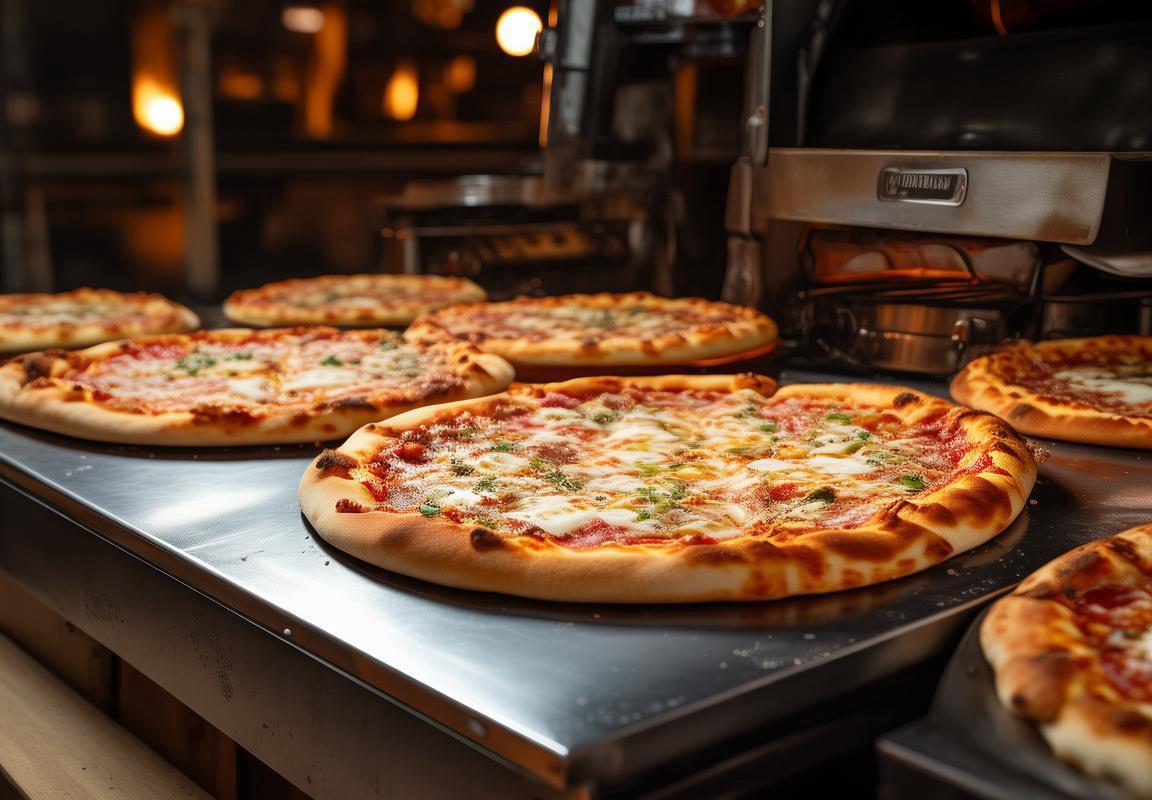
Challenges and Opportunities: Navigating the Global Kitchen Appliance Market
The global kitchen appliance market is a vast and dynamic landscape, shaped by evolving consumer preferences, technological advancements, and regulatory compliance. For RoHS compliant pizza makers, navigating this market comes with a unique set of challenges and opportunities. From regulatory hurdles to market diversification, here’s a closer look at the intricacies of this landscape.
In recent years, there has been a noticeable shift towards healthier eating habits, which has spurred the demand for home pizza makers. These appliances allow consumers to enjoy homemade, customized pizzas at the convenience of their kitchens. However, the journey to market success is fraught with complexities.
One major challenge is the need to stay compliant with the Restriction of Hazardous Substances (RoHS) directive. This European Union regulation restricts the use of certain hazardous materials in electrical and electronic equipment. For pizza makers, this means ensuring that all components, from the heating elements to the plastic housing, meet stringent safety standards. Adhering to RoHS can be costly, but it’s a crucial step in gaining market trust and credibility.
On the flip side, the opportunity lies in the growing market for eco-friendly and health-conscious products. Consumers are increasingly aware of the impact of their purchases on the environment and their health. A RoHS compliant pizza maker can leverage this trend by marketing its products as safe, sustainable, and healthy alternatives to traditional, often more environmentally damaging options.
Another challenge is the competitive nature of the global market. Pizza makers must differentiate their products through innovation, design, and quality. This involves investing in research and development to create unique features that cater to diverse consumer needs. The ability to innovate and adapt to changing trends is vital for long-term success.
Moreover, the rise of online shopping has expanded the market reach for pizza makers. However, it also means facing competition from international brands that have a strong online presence. Exporters must navigate the complexities of international logistics, customs regulations, and shipping costs to remain competitive.
On the opportunity front, the global kitchen appliance market is expanding rapidly, particularly in emerging economies. Countries like China, India, and Brazil are seeing a surge in consumer spending on kitchen appliances, driven by increasing disposable incomes and urbanization. This presents a significant opportunity for RoHS compliant pizza makers to tap into these growing markets.
Moreover, partnerships with local retailers and distributors can be instrumental in breaking into new markets. By forming strategic alliances, pizza makers can leverage the local expertise and distribution networks to reach a wider audience. This approach can also help in understanding and adapting to local preferences and regulations.
Additionally, the integration of smart technology into kitchen appliances is a trend that pizza makers should embrace. Smart pizza makers with connectivity features offer consumers the ability to control and monitor their appliances remotely, enhancing convenience and user experience. This technology-driven innovation can open up new revenue streams and create a competitive edge.
Despite these opportunities, pizza makers must also grapple with the challenge of maintaining high-quality standards while scaling operations. Ensuring consistent product quality across different manufacturing facilities and global distribution channels is no small feat. Quality control processes must be robust and adaptable to changing circumstances.
Furthermore, the global kitchen appliance market is subject to economic fluctuations and trade policies. Changes in trade agreements and tariffs can impact the cost of production and the profitability of exports. Pizza makers must stay informed about these developments and be prepared to adjust their strategies accordingly.
In conclusion, the global kitchen appliance market presents both challenges and opportunities for RoHS compliant pizza makers. By focusing on product innovation, market diversification, and strategic partnerships, these manufacturers can overcome obstacles and capitalize on the growth potential of the industry. The key is to remain adaptable, informed, and committed to delivering high-quality, safe, and eco-friendly products to consumers worldwide.

The Future Outlook: Predictions for the Growth of RoHS Compliant Pizza Makers
In recent years, the pizza maker industry has witnessed a surge in demand, driven by changing consumer preferences and the increasing popularity of home dining experiences. The landscape is not just shaped by the taste for delicious pizza but also by the importance of adhering to environmental regulations, particularly in the European and American markets. RoHS compliant pizza makers have become a cornerstone in this industry, offering both safety and sustainability. Here’s a glimpse into the future outlook and predictions for the growth of RoHS compliant pizza makers.
The integration of technology in kitchen appliances, including pizza makers, has revolutionized the way we enjoy this beloved dish. Smart features and eco-friendly designs are no longer just trends but essential components for pizza makers aiming to meet the demands of the modern consumer. Predictions suggest that as these advancements continue, the market for RoHS compliant pizza makers will expand significantly.
One key factor fueling this growth is the global emphasis on sustainability. As environmental concerns rise, consumers are increasingly seeking out products that are not only functional but also eco-conscious. RoHS compliant pizza makers, which are free from harmful substances like lead, mercury, and cadmium, are aligning perfectly with these values. The future holds a promising landscape for pizza makers that can balance innovation with environmental responsibility.
The global kitchen appliance market is dynamic, with regional variations in demand and regulatory frameworks. In Europe, for instance, the RoHS directive is a strict regulatory standard that restricts the use of certain hazardous substances in electrical and electronic equipment. American consumers, too, are becoming more aware of the environmental impact of their purchases, leading to a market that favors RoHS compliant products.
One prediction is that the demand for portable and compact pizza makers will increase as consumers look for convenience without compromising on quality. These portable units are not only ideal for small kitchens but also for picnics, camping, and other outdoor activities. The ability to enjoy homemade pizza in any setting is likely to drive sales.
The rise of health consciousness is another driver. As consumers seek healthier options, pizza makers that offer customizable settings and healthier cooking surfaces, such as non-stick coatings free from PFAS, are expected to gain traction. The market for pizza makers with these features is poised to grow, as they cater to the needs of health-conscious individuals and families.
Additionally, the integration of AI and IoT technologies into pizza makers is anticipated to become more prevalent. These smart appliances can provide real-time cooking data, offer personalized settings based on user preferences, and even connect to other smart home devices. The potential for such technology to enhance the pizza-making experience is enormous, and manufacturers that can incorporate these features into their products are likely to capture a larger share of the market.
Furthermore, the expansion of online shopping and e-commerce platforms has opened new doors for RoHS compliant pizza makers. With more consumers turning to the internet for their shopping needs, exporters have a wider reach and can tap into new markets more easily. The ease of online shopping combined with the convenience and quality of RoHS compliant pizza makers makes them an attractive product for online retailers.
However, the market for RoHS compliant pizza makers is not without its challenges. One major challenge is the cost implications of compliance. Adhering to the strict regulations of RoHS can be more expensive, which may lead to higher retail prices for consumers. This could potentially impact the affordability and accessibility of these products.
Another challenge is the complexity of navigating different international regulations and standards. Exporters must ensure that their products meet the specific requirements of each market they aim to enter. This can be a time-consuming and costly process, requiring a thorough understanding of global trade and compliance.
Despite these challenges, the opportunities for growth in the RoHS compliant pizza maker industry are substantial. The convergence of technology, environmental consciousness, and health concerns is creating a fertile ground for innovation and expansion. As the market continues to evolve, so too will the role of RoHS compliant pizza makers, which are well-positioned to meet the changing demands of consumers around the world.
The future of the RoHS compliant pizza maker industry looks promising, with predictions indicating steady growth and an increasing market share. As consumers seek out products that offer convenience, health, and environmental benefits, RoHS compliant pizza makers are likely to become a staple in kitchen appliance collections worldwide. By embracing innovation and navigating the challenges of international compliance, the industry can look forward to a future of sustainable and responsible growth.
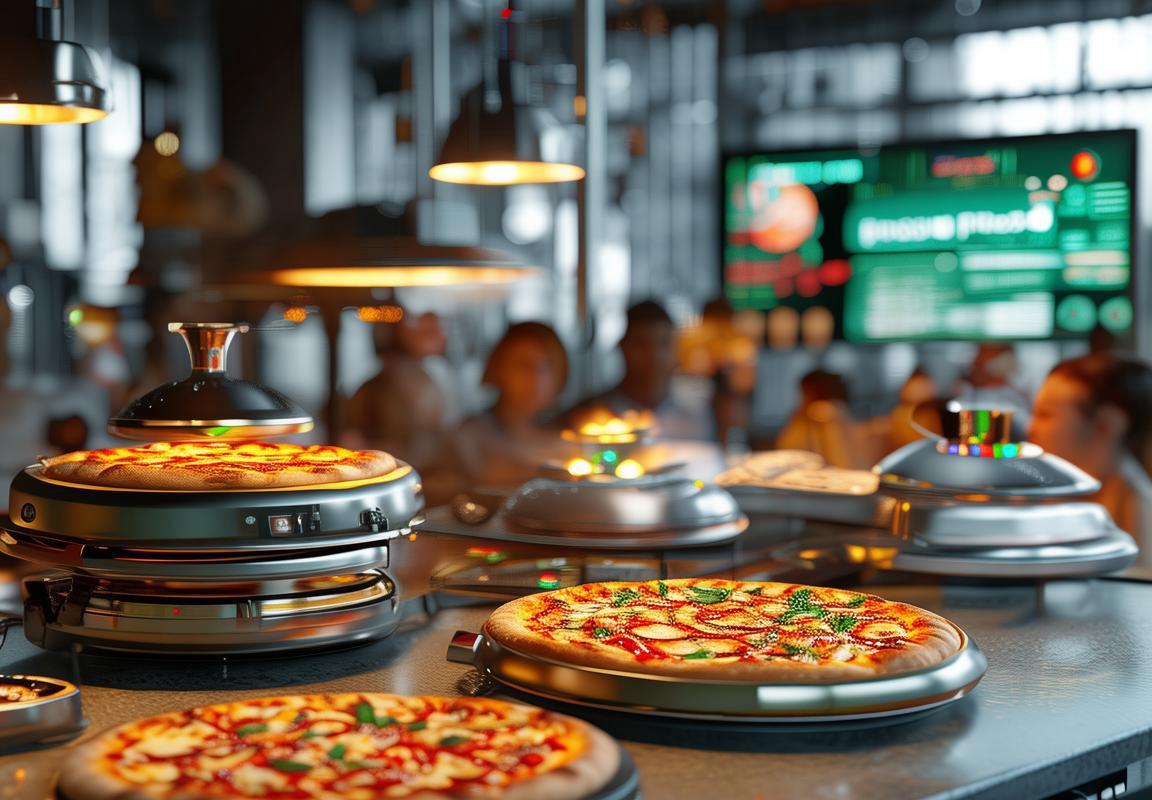
Conclusion: Why RoHS Compliance is Crucial for Pizza Maker Exporters
In today’s competitive global market, the importance of RoHS compliance for pizza maker exporters cannot be overstated. The RoHS (Restriction of Hazardous Substances) directive is a cornerstone of environmental regulation, and it’s clear why adherence to these standards is vital for businesses looking to succeed on an international scale. Let’s delve into why RoHS compliance is so crucial for pizza maker exporters and how it shapes their strategies.
The demand for eco-friendly products is on the rise, and consumers are increasingly conscious of the environmental impact of the goods they purchase. For pizza makers, this means that the materials used in their appliances must meet stringent environmental standards. Non-compliance can lead to product recalls, fines, and a tarnished reputation, which can be devastating for exporters.
Exporters who prioritize RoHS compliance are not just following regulations; they’re also tapping into a growing market segment. Consumers and businesses alike are more likely to choose products that are certified as environmentally friendly, knowing that they are free from harmful substances. This preference for green products opens up new opportunities for pizza maker exporters to expand their customer base and secure a competitive edge.
Moreover, compliance with RoHS can also lead to cost savings in the long run. By using RoHS-compliant materials, exporters can avoid the costs associated with product modifications, recalls, and legal penalties. These savings can be reinvested into research and development, improving product quality, or even into marketing campaigns that highlight the company’s commitment to sustainability.
In the pizza maker industry, innovation is key, and RoHS compliance drives this innovation. Manufacturers are continuously seeking alternative materials and manufacturing processes that not only meet the directive’s requirements but also enhance the performance and durability of their products. This push for innovation can lead to the development of new features, such as energy-efficient designs or user-friendly interfaces, which can significantly differentiate their products in the market.
The global kitchen appliance market is dynamic, with trends and drivers shaping the industry landscape. One such trend is the shift towards smart kitchen appliances, which are increasingly popular among tech-savvy consumers. RoHS-compliant pizza makers that integrate smart technology can attract a broader audience, including those who value both convenience and environmental responsibility.
Another driver is the rise of health-conscious consumers who are looking for healthier alternatives to traditional cooking methods. Pizza makers that offer models that use less oil or provide healthier cooking options are likely to resonate well with this demographic. RoHS compliance here is not just about avoiding harmful substances but also about promoting healthier lifestyles.
Despite the opportunities, pizza maker exporters face challenges in navigating the global market. One significant challenge is the varying regulations across different countries and regions. While RoHS is a European directive, other regions have their own equivalent regulations, such as China’s RoHS and the United States’ Consumer Product Safety Improvement Act (CPSIA). Keeping track of these regulations and ensuring compliance can be complex and resource-intensive.
Additionally, the cost of certification and compliance can be a barrier for small and medium-sized enterprises (SMEs). However, for those who manage to overcome these challenges, the potential rewards are substantial. A successful exporter of RoHS-compliant pizza makers can enjoy a loyal customer base, increased market share, and the ability to enter new markets with ease.
Looking ahead, the future outlook for RoHS-compliant pizza makers is promising. As awareness of environmental issues grows, so does the demand for sustainable products. Predictions indicate that the market for eco-friendly kitchen appliances will continue to expand, and pizza makers that can demonstrate their commitment to sustainability will be well-positioned to capitalize on this trend.
In conclusion, RoHS compliance is not just a legal requirement for pizza maker exporters; it’s a strategic necessity. It opens doors to new markets, attracts environmentally conscious consumers, and drives innovation. By embracing RoHS compliance, exporters can build a strong brand reputation, reduce costs, and create a sustainable competitive advantage in the global kitchen appliance market.